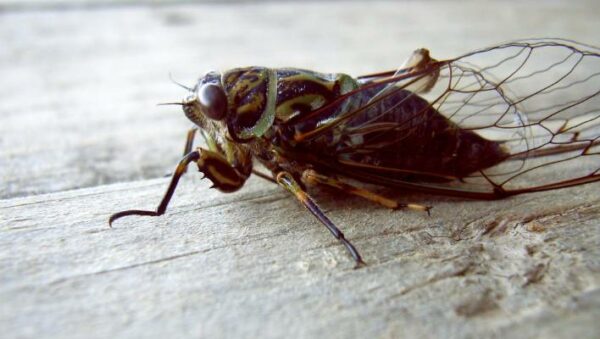It’s that time of year when the Cicada makes their circadian debut (yep pun intended) following a 17-year internment buried deep underground.

Cicada give us a brilliant insight into the health (or not) of a particular ecosystem. With many different species living just about everywhere in New Zealand from swamp to mountain top, from a sandy beach to semi-tropical rainforest – the one typical thing is the deafening chorus a healthy colony creates at this time of year.
But nowadays, traveling through GodZone can be depressingly quiet. Our government’s obsession with mass poisoning kills just about everything that breaths air. Cicada are especially hit hard as a single dose of insecticide can wipe out a 17-year old colony in one fell swoop.
Interestingly enough, driving this morning along the boundary of a property 1080’d a couple of years back, there is no sign of cicada, apart from a few enclaves with a loud chorus adjacent to buildings where aerial 1080 would have had to avoid – but then back to the sound of silence immediately after.
It was good to get home to appreciate just what noisy insect neighnours I enjoy.
Just a few weeks ago, I drove through the Aorangi State Forest, and during the whole day I saw not a single solitary bird, only a couple of dragonflies, and in just one magical 20-metre spot were the familiar sounds of cicada – everywhere else ghostly silence. When people talk of the Silent Forest I know exactly what they mean, and if other people disagree then all I can say is you obviously don’t get out there very much.

I have noticed a lack of – indeed absence – of cicadas in some wilderness trout rivers I’ve fished – following OSPRI/DOC 1080 drops. Cicadas are a major summer food source for backcountry trout. Yet Fish and Game have not raised a murmur about it. The lack of justification for the 1080 drops is not very hard to find. It is based on myths and “spin”.
Cicadas are also a major summer food source for some species of native birds too.
Terrestrial insects like cicadas and passion vine hoppers appear to have become more important food sources for lowland trout in rivers like the Motueka. Sadly, caddis and mayfly hatches have declined through nitrates, low flows, warm temperatures, and sedimentation etc.
Despite what local councils say we are very fortunate to have crack willow, broom, gorse, blackberry, and old man’s beard, to hold our river banks together – without them lowland trout fishing would be very poor indeed.
Just come back from five days in Kahurangi, first thing to greet us 1080 warning sign at hut no cicadas and bugger all birds. Am a regular visitor to a place in Fiordland which has never been poisoned cicadas by the thousands and heaps of birds. When will DoC wake up.
On a recent fishing trip to Nelson’s Lake Rotoroa the lack of insect life was very obvious. Hardly a sandfly, very few trout and one native pigeon. The bush adjoining it was poisoned with aerial 1080 last year. Nearly everyone knows the problem is poison except the top guys in Government and the corporate poisoners who collect the money from spreading it. Polluting our environment with poisons is irresponsible and insane.
It has to stop.
The 17-year (and other periodic cicadas) are North American species. Our local species do spend several years as a larva in the ground but they are not as long-lived and synchronized as the N.A. species. However we do have considerable variation in the number of adults emerging each year, and that can also vary regionally. But the larvae are deep in the soil feeding on plant roots and so are unlikely to be in contact with 1080. The adults are out in late summer, not the usual time for 1080 drops. Low numbers of cicadas now in certain places might just be a late season, or it could be natural year-to-year variation, but if there really is a decline I would suspect wasps to be a more likely culprit than 1080 (especially in Nelson Lakes).